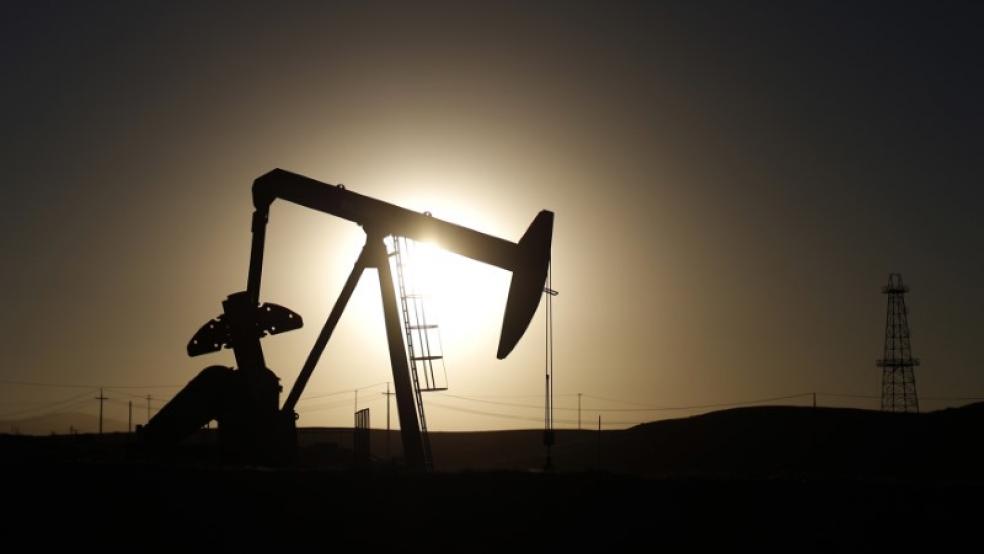The depletion of old oil wells is expected to surpass new sources of supply in 2016, as the ongoing oil price slump puts a long list of oil projects on the shelf.
Bloomberg flagged new data from the Norwegian consultancy firm Rystad Energy, which predicts that legacy production will tip the supply balance into the negative in 2016 for the first time in years.
Related: Four Reasons Oil Could Fall to $40 a Barrel
The production from an average conventional oil field typically ramps up in the early years, plateaus and then enters a period of decline. Depletion rates vary wildly from field to field, but a rule of thumb for conventional oil fields – which make up the bulk of total global supply – is that they decline something like 6 percent per year on average. Again, those depletion rates can differ depending on location, levels of investment, etc., but one thing that is clear is that the oil industry needs to bring new oil fields online every year in order to merely keep production flat.
Rystad Energy estimates that the crash in oil prices has cut into upstream investment so severely that natural depletion rates will overwhelm the paltry new sources of supply in 2016. Existing fields will lose about 3.3 million barrels per day (mb/d) in production this year, while new fields brought online will only add 3 mb/d. This does not take into account rising oil demand, which will soak up most of the excess supply by the end of the year.
But the 3 mb/d of new supply in 2016 will mostly come from large offshore projects that were planned years ago, investments that were made before oil prices started crashing. The EIA sees four offshore projects starting up in 2016 – projects from Shell, Noble Energy, Anadarko, and Freeport McMoran – plus two more in 2017. The industry completed eight projects in the Gulf in 2015. U.S. Gulf of Mexico production will climb from 1.63 mb/d in 2016 to 1.91 mb/d by the end of 2017.
However, outside of these large-scale multiyear offshore projects, the queue of new oil fields is starting to be cleared out. By 2017, the supply/depletion balance will go deeper into negative territory. Depletion will exceed new sources of production by around 1.2 mb/d before widening even further in 2018 and 2019.
Related: 5 Conspiracy Theories About the Oil Crash, from Ludicrous to Logical
A few months ago, Wood Mackenzie estimated that around $380 billion in planned oil projects had been put on ice due to the crash in oil prices. Wood Mackenzie says that between 2007 and 2013, the oil industry greenlighted about 40 large oil projects on average each year. That figure plunged to fewer than 10 in 2015.
The coming supply crunch stands in sharp contrast to the short-term picture. The EIA reported on March 23 that crude oil storage levels once again increased, surging by 9.4 million barrels last week to break yet another record. Total inventories in the U.S. now stand at 532.5 million barrels. Record high storage levels, which continue to climb, are signs of short-term oversupply. The IEA expects supply to continue to outstrip demand by about 1.5 mb/d until later this year. Oil storage levels will have to fall to more normal levels before oil prices can rise substantially.
But the Rystad Energy figures show that the supply-demand balance could quickly swing back in the other direction as upstream investment has screeched to a halt. As soon as later this year, or perhaps in 2017, demand could catch up to supply. Inventories will begin falling quickly and prices will start to rise. However, since supply is inelastic in the short run, the industry may struggle to satisfy demand at stable prices. The oil markets have always suffered from booms and busts, and this is just more of the same. The current bust is sowing the seeds of the next boom.
Of course, U.S. shale has demonstrated its ability to ramp up quickly, and those short lead times could allow new supply to come online as prices rise. But it remains to be seen if U.S. shale, more or less on its own in the short run, can meet rising demand in 2017 and 2018 as conventional oil drilling remains on the sidelines.
This article originally appeared on OilPrice.com. Read more from OilPrice.com:
The Current Oil Price Rally Is Reaching Its Limits
New Biofuels Alternative Could Upend Oil Markets
Brussel’s Terror Attack Drives Europe Further Into Terrorism Rabbit Hole




